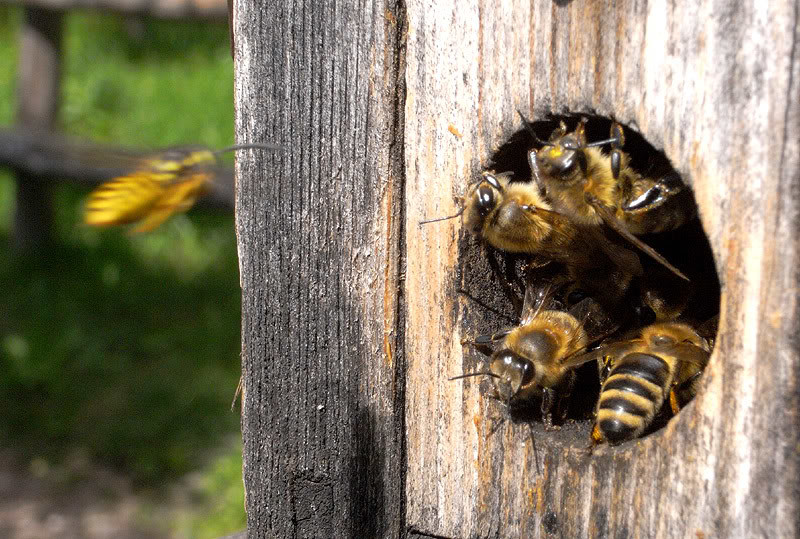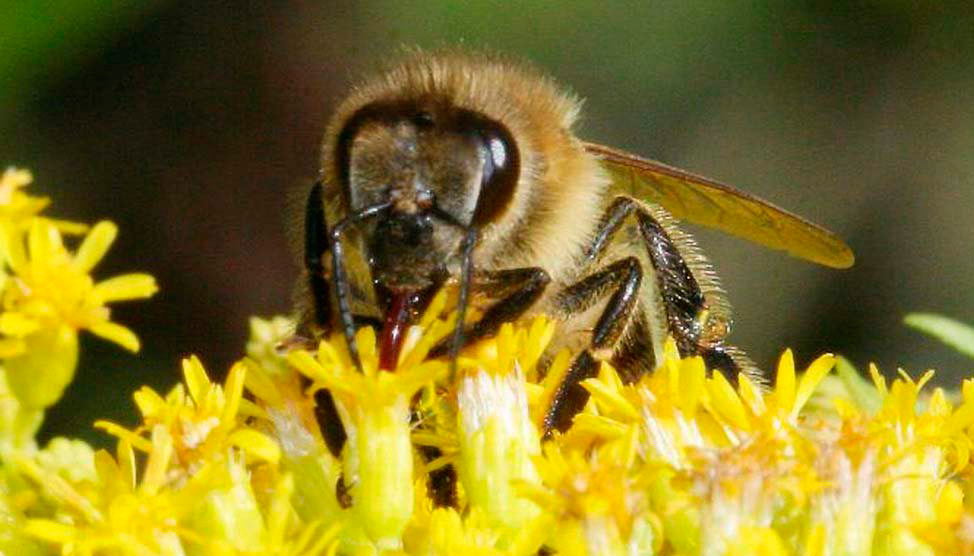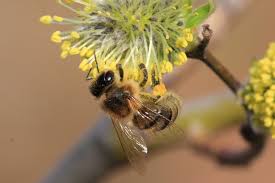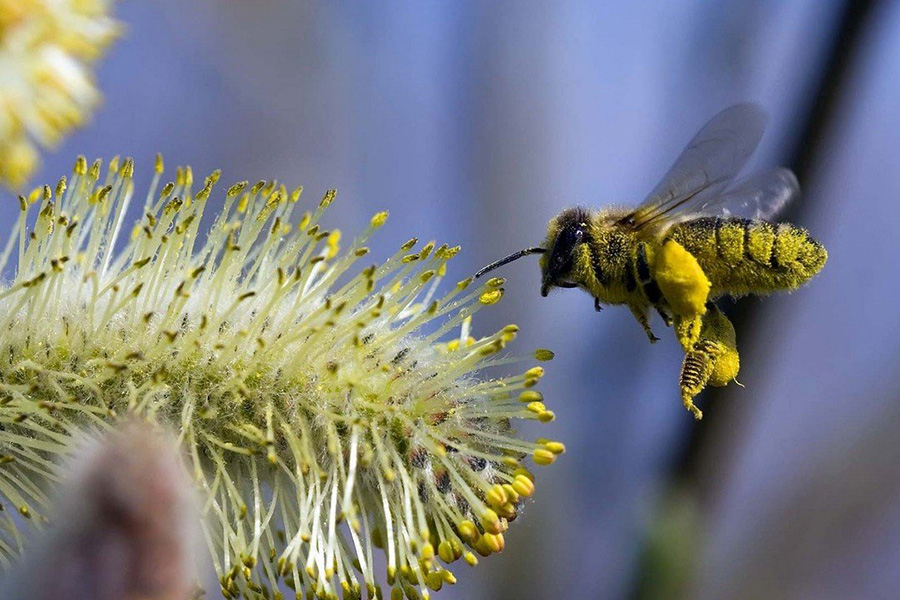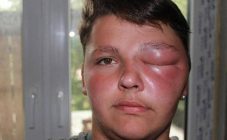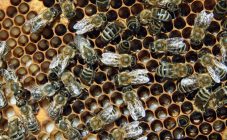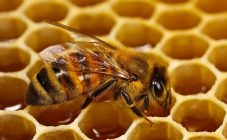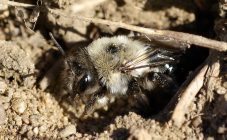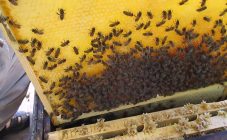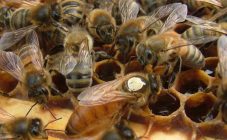Content:
Bees are striking in efficiency. Individuals-gatherers fly every day for products for making honey, overcoming a long way. The amount of honey in the hive depends on how far the bees fly. A person breeding Hymenoptera should consider the range of the pet.
Why do bees fly out of the hive
Flying bees are born during the warmer months. Already 10-20 days after hatching, such an individual is ready to fly out for nectar and pollen. Nectar is necessary for the production of honey, pollen - for the manufacture of bee bread. The bees store both products so as not to starve to death in the winter season. At the same time, honey and bee bread should be in abundance, since the beekeeper will take some of the bee sweets for himself. In order to collect enough necessary components, flight bees are born (their other name is gatherers). In a strong family, consisting of 10-15 thousand individuals (the total weight of bees in this case is 1-1.5 kg), 4-7 thousand insects become flying insects.
Flight speed
Researchers studying the life of Hymenoptera have concluded that the speed of a bee depends on many factors. Among which:
- The presence or absence of nectar in the goiter;
- Windy or calm weather;
- What terrain does the insect need to overcome?
The speed of the picker, which has just left the hive, is about 30 km per hour. But in some sources you can find a figure of 40 and 60 km per hour. At what speed does a bee, laden with nectar, fly? This individual flies more slowly - about 13-22 km per hour.
If the weather is windy, then an unloaded bee flies against the wind about 20 km per hour. In turn, an insect with a full goiter of nectar overcomes wind resistance at a speed of 3-14 km per hour.
It has been established that the flight speed of the bee is higher in open areas. Trees or other obstacles reduce the speed of an unloaded bee to 20-25 km per hour.
Flight radius
There is such a characteristic - the useful radius of the bee's flight. This is the distance the bee flies to the flower, spending a minimum of energy and food. Such a flight is considered the most advantageous and effective. The useful radius is 1 to 2 kilometers.
For a bee to have the strength to fly after prey, it must have a supply of honey or nectar. For one kilometer of flight, a worker spends about 0.4 mg of the product. A loaded bee spends food on the production of energy from the stock of nectar that it has collected from flowers. A loaded bee spends more food than an unloaded bee. Therefore, the further she flew from the hive, the more food she will spend while flying home. On crossing the terrain 2 km away, it takes the minimum amount of food - about 0.8 mg in one direction and about 1.5 mg in the other.
If a flower field or linden forest is located at such a distance from the apiary, then the bees will have no problem providing enough honey for themselves and the owner. The beekeeper should know about the useful radius. It is at a distance of 1-2 km from fields with honey plants that it is best to organize an apiary. Another option is to purchase mobile hives that can be delivered directly to the nectar collection point.
Possible flight range
A radius of 1-2 km from the hive to the insect workplace is an ideal scheme. Scientists have found that Hymenoptera usually fly further. The question "how far does the bee fly away from the hive?" depends on where the plants are located from which you can get nectar and pollen. It has also been found that insects will go further than normal nectar for more concentrated and sugary nectar.
Pickers, flying out of the hive, take 1.8-2.1 mg of food with them. 0.4 mg is spent per 1 km. Accordingly, there will be enough power to fly about 4.5 km. If the flower field is located exactly at this distance, the bee will overcome it without hesitation.
However, experiments have shown that 4.5 km is far from the maximum range that Hymenoptera can move. Then how far do bees fly for nectar? There is evidence that pickers sometimes fly away for prey 8-12 km from home. Such records are set by representatives of very strong bee colonies. In weak families, Hymenoptera do not risk moving away from the hives by more than 2-3 km.
The insects are forced to go on a long flight due to the lack of a sufficient amount of products necessary for the production of honey. That is, there are no melliferous and pollen-bearing flowers, trees, shrubs nearby. Another reason is to travel for more concentrated nectar. Plants give especially sweet nectar:
- Linden;
- Pear;
- Forest raspberry;
- Apple tree;
- Clover;
- Medicinal lungwort;
- Donnik;
- Heather, etc.
Flights from flower to flower
The bee fills its goiter with nectar in different quantities (from 7.5 to 50 mg). Strong bees take bribes of 50 mg. In order to collect the product, they fly from flower to flower. The proboscis of bees is short, therefore, once on the honey plant, they are forced to crawl inside.
In one flight, a picker can visit about a hundred flowers. If she stumbles upon a plant with a large amount of nectar (for example, linden, hawthorn, lungwort, coltsfoot, etc.), then she does not make any extra flights.
Landing on the core of the flower, the insect begins to randomly examine it. As a result, the bee finds food, which can be on the open part of the plant or in its depths. It has been established that bees remember how to extract nectar from a particular plant. As a result, they optimize their work and only take products from the colors they know.
If you follow the workers soaring in the field, you can see something unusual in the way the bees fly from flower to flower. During immersion in the core of the flower, flying individuals touch the stamens with pollen. After they leave the flower, in the air, they try to hide the collected pollen in special compartments on the legs. To do this, they quickly move their limbs right in flight. One gets the feeling that, flying from flower to flower, the gatherer is dancing. In fact, she is just tamping the pollen adhering to her.
How many bees flies per day
The working day of the toiler begins at 4-5 am. She flies to work by the time the flowers open. She returns to the hive for the night only at 20-21 o'clock. Sometimes insects that did not have time to get home during daylight hours spend the night on plants.
On average, a bribe flight takes from 20 minutes to 1 or 2 hours. Returning to the hive, the picker spends 8-16 minutes there. It takes time to transfer the collected products to the receiving bees. After completing the transfer, the picker leaves the house again.
As a result, the bee manages to complete 7-11 flights per day. During each flight to the honey plant and back to the family, she flies an average of 4 to 10 km. As a result, a small insect travels 40-100 km in one working day.
What weather bees fly
Numerous observations of Hymenoptera have shown that weather directly affects the work of flight individuals. The bees will prefer to hide in the house if:
- It's raining;
- Fog is descending or has already descended;
- Too strong wind;
- The temperature is below +10 degrees;
- The air warmed up above +35 degrees.
The best weather for pickers is a sunny day with no wind or a little breeze. In this case, the temperature should be at least +17 degrees and not higher than +35 degrees. The point here is not a decrease in the working capacity of insects, but in the functioning of plants. On a too humid, cool or hot day, the amount of nectar in plants is noticeably reduced. Because of this, a rainy summer can disrupt the way of life of bee colonies. In this case, the flying individuals do not fly out for food, and the bees processing pollen and nectar have no work.
Knowing how far bees fly from the hive in summer is important for beekeepers. Thanks to her, you can equip an apiary near flowering plants. Thus, the efficiency of the insects will be increased.
